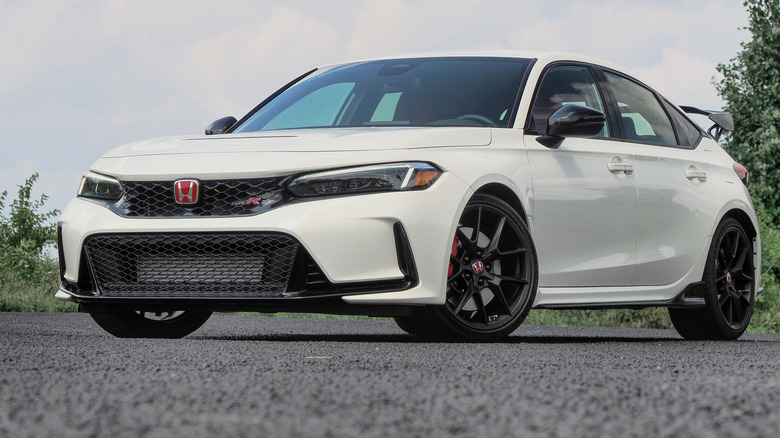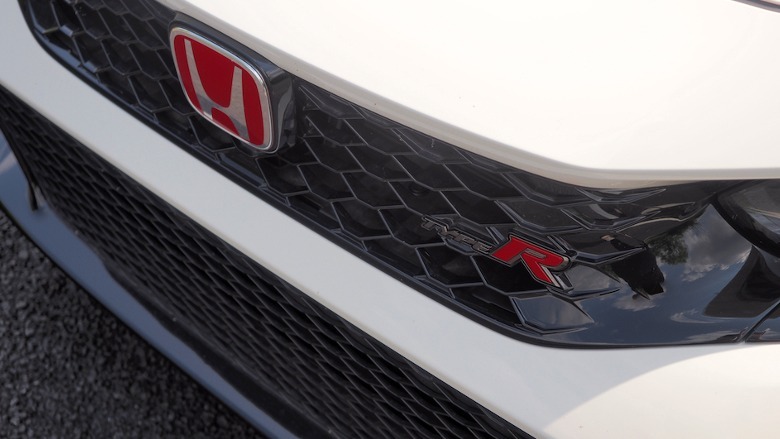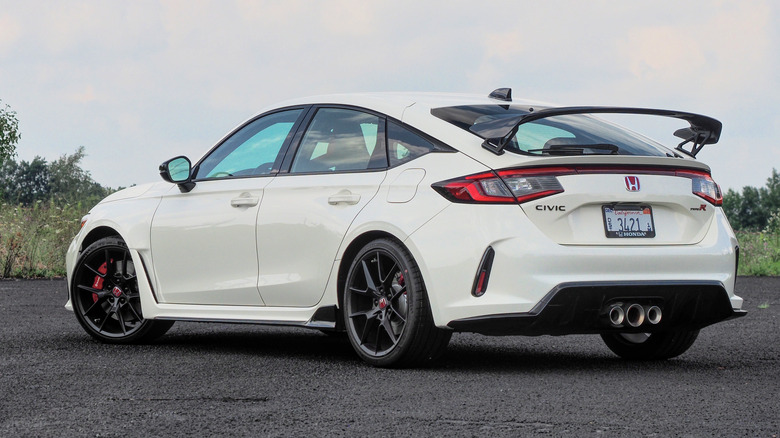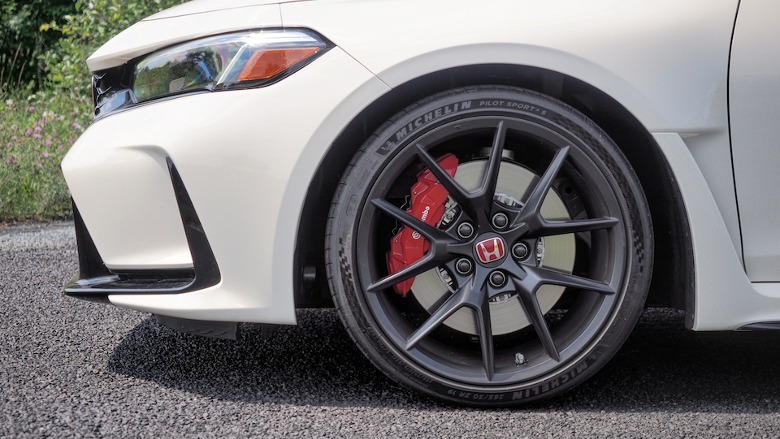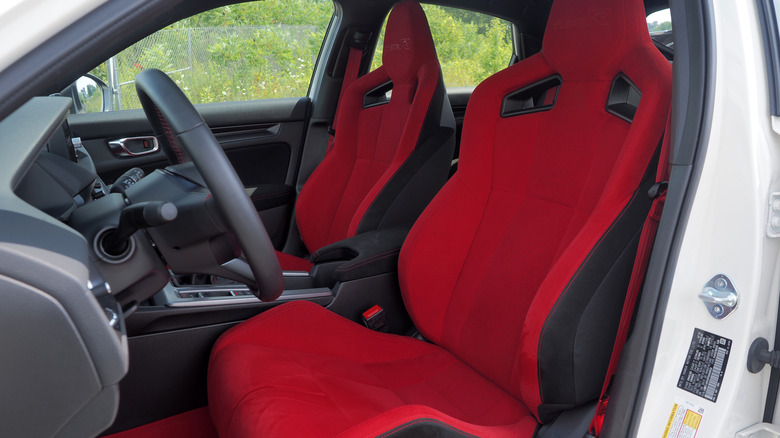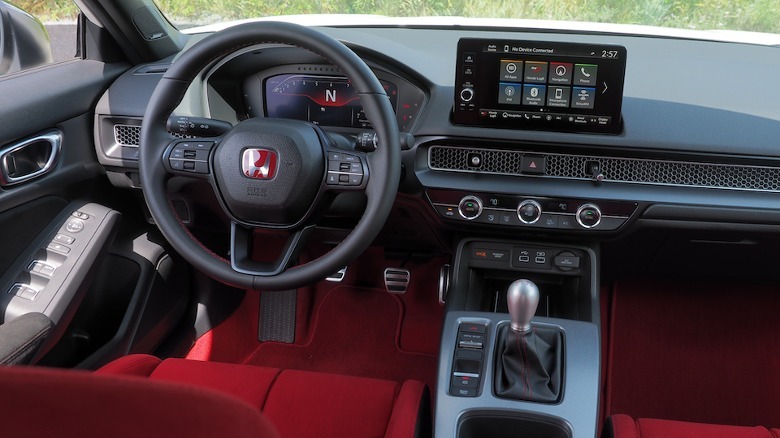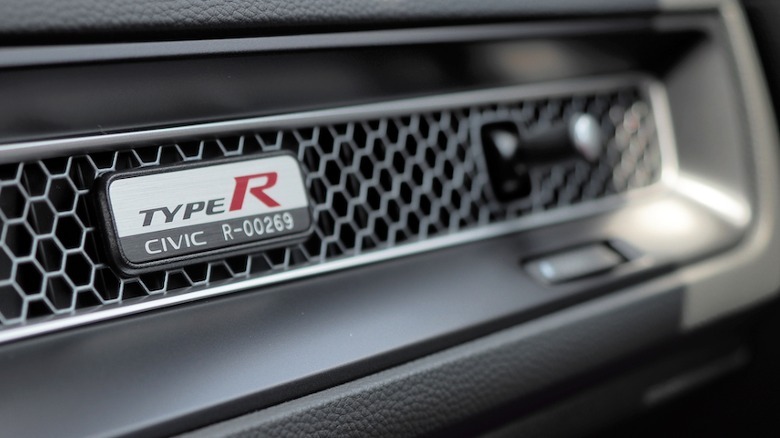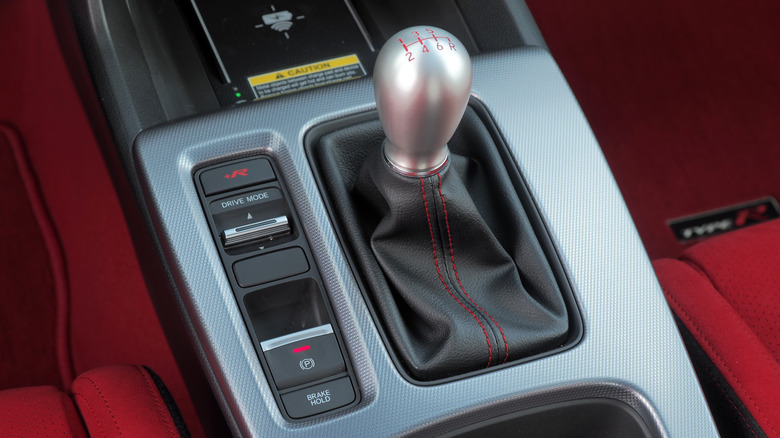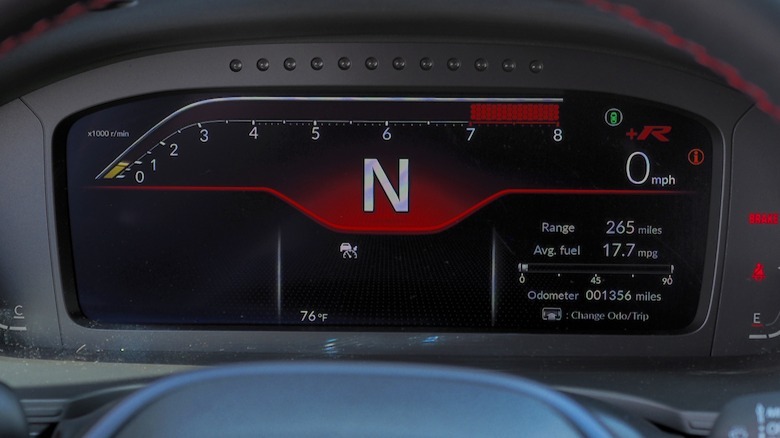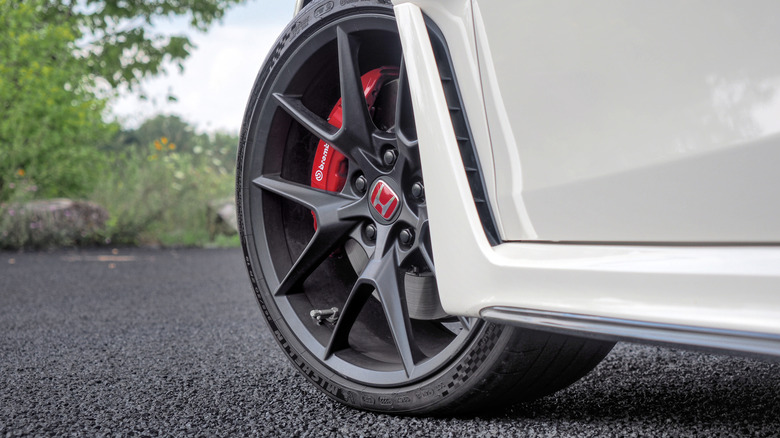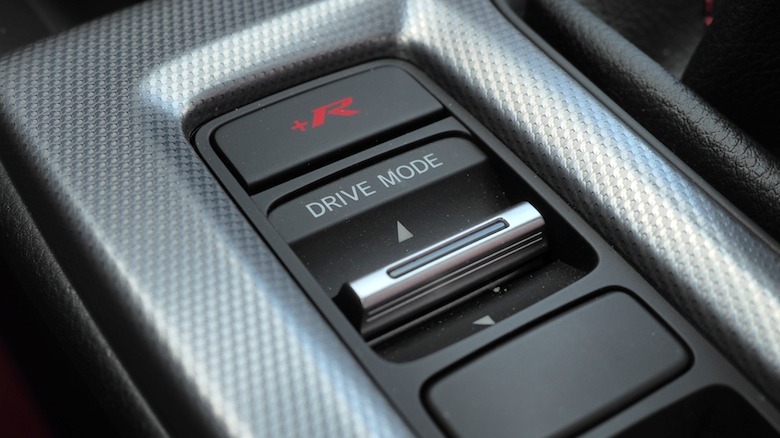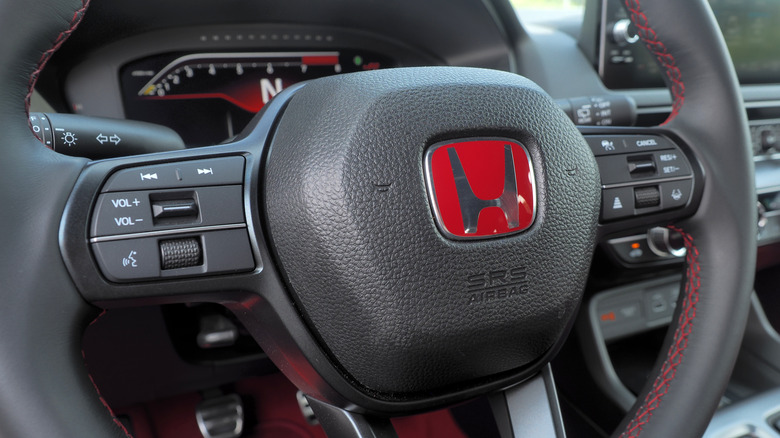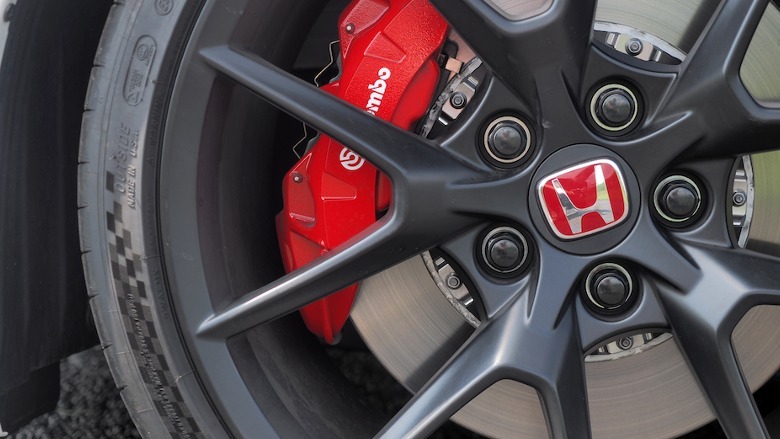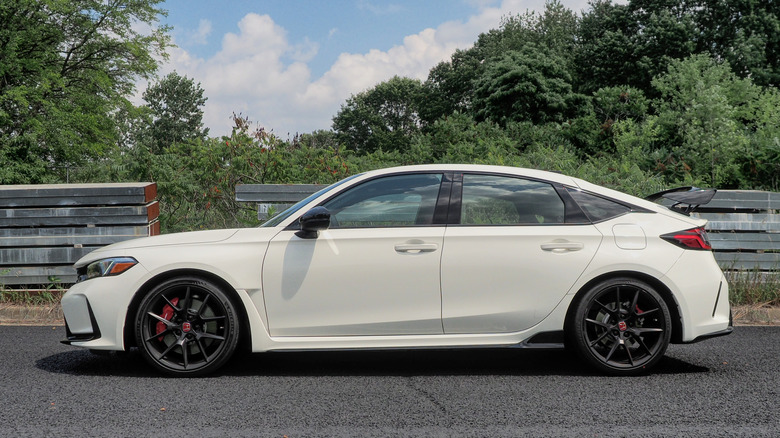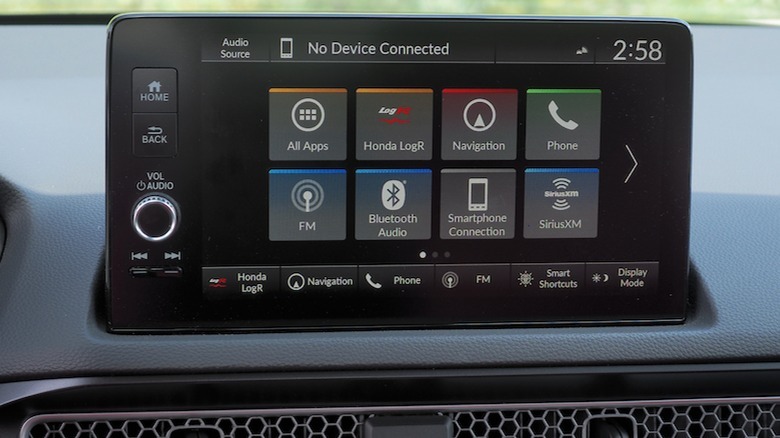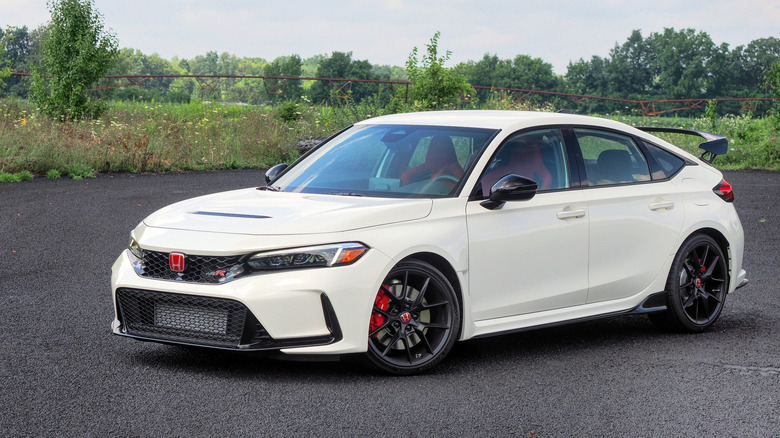2023 Honda Civic Type R Review: Everything That Matters
- Exceptionally rewarding engine, gearbox & suspension
- Aggressive price
- Daily-usability levels are high
- Well-equipped cabin
- Styling is less in-your-face than last-gen Type R
- Hard to meet EPA fuel economy numbers when you drive it hard
Considering the auto industry can't stop shouting about how it's transitioning to all-electric, we've been unexpectedly spoiled with new performance vehicles over the past couple of years. Not just high-priced, "we're only building ten of them" exotics, either: relatively affordable sports cars that still keep a foot in the everyday-usability camp, even as they promise mile-wide smiles when the opportunity for playtime arises.
The 2023 Honda Civic Type R arrived in fourth-generation form only this year, though fans of the segment know it has a serious pedigree. First offered in 1997, this more fulsome Civic starts with the hardly-underwhelming bones of Honda's ever-popular compact runabout and then puts it through the sort of glow-up that usually warrants a training montage sequence in action movies.
The result, at $43,795 (plus $1,095 destination), is expensive for a Civic but a bonafide bargain for a 315-horsepower hot hatch. What's particularly fascinating, however, is that the new Civic Type R arrives to find some strong competition lurking. Toyota's GR Corolla, Hyundai's Elantra N, and even Nissan's newest Z are all making a similar pitch: big fun, without the big sticker. The question is, does that eclipse Honda's plaything in the process?
A little more sober, a little more grown-up
Those who loved the old-school, raucous aesthetic of previous Civic Type R generations could — not unfairly — accuse this 2023 version of having grown up and become a little more serious. To the standard Civic hatchback, Honda applies a custom body kit and other extras, more in the name of aerodynamics than outlandish design. There's a hood vent and a bigger front grille than the old Type R, both with genuine cooling purposes, while functional ductwork does the same for the brakes.
There are side and rear flares, plus an outsize rear spoiler, again all in place in the name of downforce and aero improvement. Even the 19-inch matte black alloy wheels aren't satisfied with just looking cool: their reverse rim design apparently helps keep the Michelin Pilot Sport 4S-clad rims more stable at higher speeds.
Honda has, in short, a very good explanation for all of its decisions here. You couldn't be blamed for wishing the latest Civic Type R was a bit more moody and aggressive generally, though. That's something the Acura Integra Type S delivers in spades.
Snug seats, spacious trunk
The relatively light touch continues inside, though here Honda's already-excellent Civic cabin design means you can forgive the mere sprinkling of Type R extras. The seats are the most obvious change, heavily bolstered and microsuede-clad to keep you nicely pinned in place during aggressive driving. There's only one color-scheme, so hopefully you like bright red upholstery.
Some matching red badging and other trim join Honda's still-pleasing mesh effect dashboard. The Civic Type R also gets the Bose 12-speaker audio system that lesser Civics offer as an option, plus dual-zone climate control, and a 9-inch touchscreen infotainment system with wireless Apple CarPlay and Android Auto support. A wireless phone charger lurks in the center console.
For the most part, everything feels sturdy and premium (the clicky, plasticky steering wheel buttons are the only exception) and Honda's uniquely-numbered serial number plate is a nice touch. Despite the sporting focus, the Civic Type R is practical too. You still get a 60/40 split rear bench, to expand the trunk from its standard 24.5 cu-ft.
Manual-only, and that's just swell
The Star of the cabin is, undoubtedly, found underneath your right hand. Honda not only offers a manual transmission with the 2023 Civic Type R; it mandates it. If you can't row your own gears, you're out of luck, because there's no automatic option here. Honda took the same approach with the previous generation, and just as was the case then, you can't really fault them for it.
That's because the standard 6-speed manual is, for want of a better word, glorious. There is a tendency, among stick-shift enthusiasts, to dole out praise simply because there's a non-automatic choice on a new vehicle's option sheet. That conveniently overlooks the fact that not all manual transmissions are created equal, and if you're going to make a compromise on things like straight-line acceleration and day-to-day convenience (which is, let's face it, still a concern even in a "fun" car) then it needs to be for a great gearbox.
"Great" is an understatement, here. About the worst thing you could say about the new Civic Type R's transmission is that the metal shift knob is probably going to be uncomfortable on particularly hot or cold days. Otherwise, perfect clutch-weighting and a slick and balanced throw — neither too long nor too short, too heavy or too light — put Honda's stick on a par with that in the perennially-excellent MX-5 Miata.
More than enough horses
In fact, you could make a solid argument that the Civic Type R is a surprisingly great car to learn a manual transmission in, though the potential for getting into trouble might make that just as much a bad idea. The turbocharged 2.0-liter VTEC engine delivers 315 horsepower and 310 lb-ft of torque for the front wheels to enjoy, with a limited-slip differential for better placement of power and sharper steering.
There's both a Sport mode and a +R mode, the latter being the Type R at its most potent (and getting a dedicated button along with special driver display graphics). Either way, there's a sinuous ease to driving this burlier Civic, with power delivery smooth and consistent. The throttle curve changes as you climb higher through the drive modes, but it's never difficult to modulate cleanly.
Then there's the grip. Unlike Toyota's GR Corolla, Honda stuck with front-wheel drive for its hot hatch. You'd think that would mean a penalty for getting power down, and in the turns, but the reality is far from that. Everything is tuned just so, never leaving you with the sense that the front end is overworked. Even moments where your ambition might outshine the Type R's grip are telegraphed nicely, and the precise throttle makes controlling sideways movement simple and without demanding the intervention of the traction control.
Agile and usable
Fast, ridiculously powerful supercars are fun but more balanced, agile sports cars are arguably better. There's definitely something to be said about winding the Civic Type R up and watching the race-style upshift LEDs light up above the instruments. You only get to broach the redline of a 911 or a BMW M5 a couple of times before the likelihood of you sacrificing your license becomes considerable.
They're very different cars, of course, but the Civic Type R and Mazda's Miata feel like spiritual siblings. Each wields some, but not too much, power; each putting the emphasis on chassis, suspension setup, transmission, and tractability. In short, rewarding thoughtful drivers, even if part of the Type R's charm is how rapidly you get into its ebb and flow of quickly-arriving torque and grippy cornering, and it all becomes borderline instinctive.
As for slowing, Honda fits four-piston Brembo front brakes — with 13.8-inch two-piece rotors — as standard. They're powerful, but also refreshingly linear in their application. A confident foot on the pedal will bring the Civic Type R to a halt quickly, but without jerking and jolting.
Despite everything, the eminent daily-driver
What stands out, perhaps not as obviously as the Type R's fun quotient but no less important if you're living with a Civic, is how Honda's helping hand makes day-to-day driving less stressful. Standard automatic brake hold, for example, reduces the pedal dance when you're more focused on the Costco commute than burning up backroads. The rev-match system, while capable, isn't so aggressive as to feel vulgar around town.
In Comfort mode, while you won't forget this is a sporting Civic, the adaptive dampers do at least take some of the spine-shattering edge off poor-quality roads. Honda's dual-pinion, variable-ratio electric power steering also adjusts based on drive mode, capable of trading a little directness for a more relaxed experience.
Then there's fuel economy. Yes, opting for the Type R means you take a hit on consumption compared to other Civic variants, but the 22 mpg city, 28 mpg highway, and 24 mpg combined EPA numbers aren't as painful as they could be. Even if, yes, somewhere south of 18 mpg is more likely if you drive the Honda like it wants to be driven. At least it's content with regular unleaded, rather than demanding premium.
2023 Honda Civic Type R Verdict
Enthusiast drivers whose budgets don't stretch to baby Porsches or Toyota's Supra have gained a surprising array of options over the past couple of years. Fiercer versions of mass-market hatchbacks and sedans — like the GR Corolla and Elantra N — demonstrate just how much playfulness can be coaxed from what would normally be a sensible purchase. Meanwhile, aggressively-priced models like the latest generation of Nissan Z add head-turning style, too.
At least, that's the theory. The reality is that limited production capacity, combined with high demand and widespread dealership mark-ups, saps some of the "affordable" part of these "affordable fun" cars. It's no slight on the Civic Type R — or the Toyota, or anything else in slim supply right now — but it's a frustrating footnote to what should rightly be one of 2023's most exciting models.
Artificial scarcity sucks, but the new Honda Civic Type R is good enough that it's worth the hunt to find one in stock and without an unduly inflated sticker. Could it look more aggressive? Sure. Can it be a bit thirsty when pushed hard? Unsurprisingly, yes. And yet the trifecta of a great engine, great suspension, and great gearbox once again demonstrate that you don't need to reach for gimmicks to make an engaging driver's car. Just getting the basics right is more than enough.
